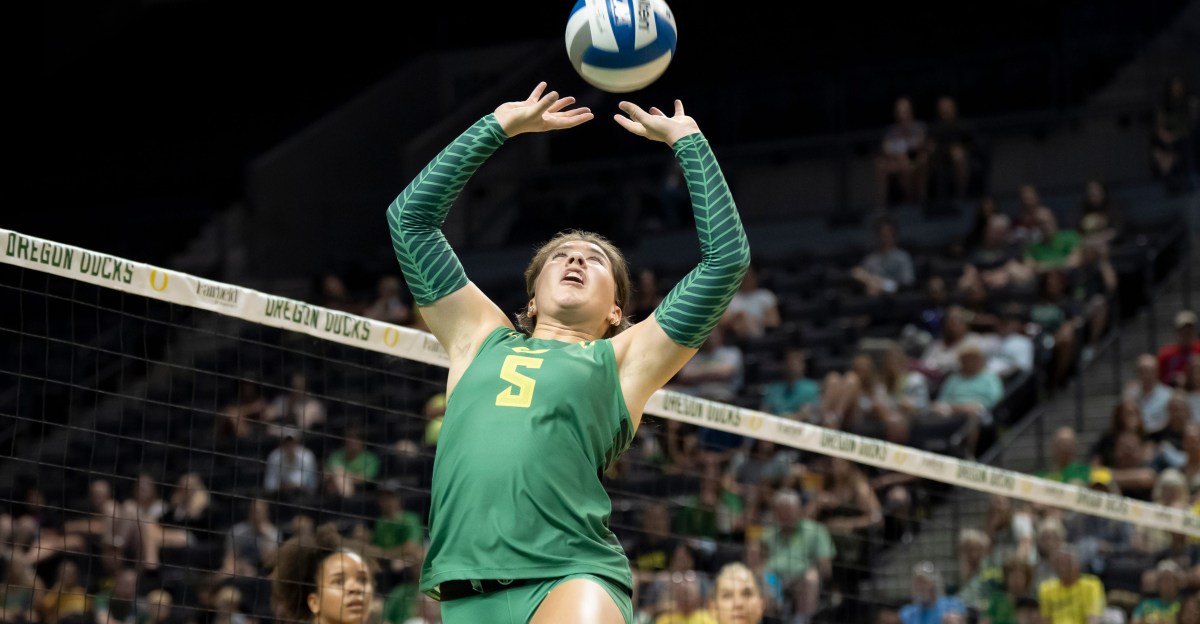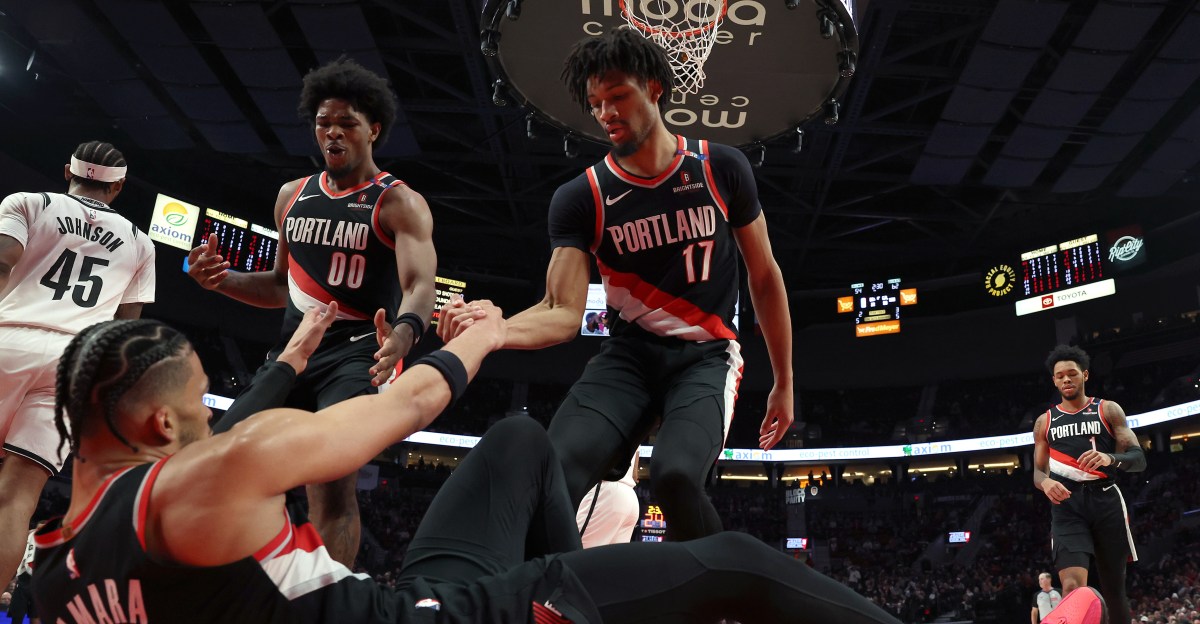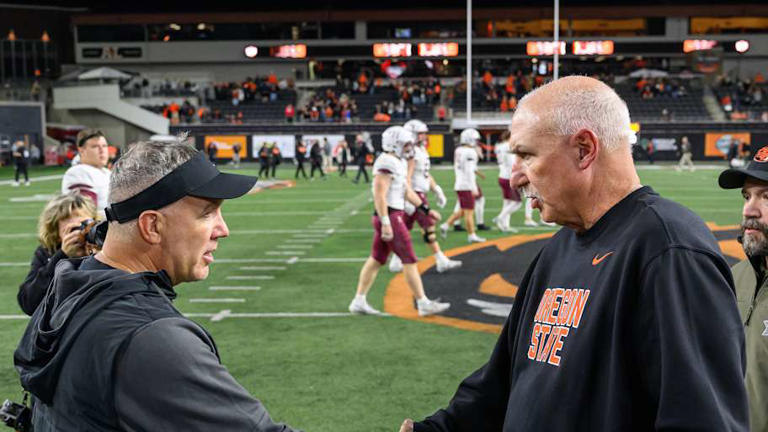Duck Tape: Oregon Football Wide Receivers Coach Ross Douglas
Only 11 days after Oregon’s wide receivers coach Junior Adams left for the same position with the NFL’s Dallas Cowboys it was announced that Ross Douglas would fill the role. Coach Douglas spent 2024 as the wide receivers coach and passing game coordinator at Syracuse. Prior to that he had spent three years as wide receivers coach with the New England Patriots under Bill Belichick. As part of a new staff under first year head coach Fran Brown at Syracuse, the Orange went 10-3 to match the best record that the previous head coach, Dino Babers, had achieved in 8 years in upstate New York.
With a new staff in place and transfer QB Kyle McCord coming in from Ohio State the offense went from 82nd in the F+ rankings to 41st. I watched the broadcast film of all twelve of Syracuse’s games against FBS competition in 2024, documenting the offense and grading the performance of the receiving corps.
Syracuse Offense 2024
| Offense | Plays | Success Rate | Explosive Rate | Adj. YPP |
|---|---|---|---|---|
| Offense | Plays | Success Rate | Explosive Rate | Adj. YPP |
| Rush | 298 | 51.68% | 11.07% | 4.05 |
| Pass | 590 | 54.24% | 19.66% | 7.92 |
| Total | 888 | 53.38% | 16.78% | 6.53 |
Tristan Holmes
As the performance statistics above clearly indicate, Syracuse went as far their passing game took them. The most frequently targeted wide receivers were R-Jr. #2 Trebor Pena, Sr. #7 Jackson Meeks, and So. #82 Darrell Gill Jr. Other frequent pass targets were R-Jr. tight end #19 Oronde Gadsen and Jr. running back #1 LeQuint Allen. No player besides these five was targeted more than 15 times over the course of the season. Their individual performance statistics are shown below.
:no_upscale()/cdn.vox-cdn.com/uploads/chorus_asset/file/25967960/Syracuse_2024_Primary_Receivers.png)
Though I did not grade Gadsen and Allen as they were not part of Coach Douglas’ position group, they were key facets of the passing game he helped coordinate so it is helpful to understand their roles. Gadsden was split out wide or in the slot as often as in-line or at H-back. Both in terms of build and athletic ability Gadsen reminded me a lot of Oregon’s Kenyon Sadiq. His production this past season presents tantalizing possibilities for what Sadiq could accomplish this coming season as a featured starter. I was very impressed by Allen as a back, as he frequently had to “be his own blocker” and turn failed plays into successful ones by himself due to a very lackluster offensive line in front of him. As a receiver I liked his hands and run after catch ability. His lackluster success rate and yards per target are mostly due to often being targeted as a check down when the primary options were covered.
Pena and Meeks were on the field for the majority of all offensive snaps outside of garbage time, in the slot and at X, respectively. Gill rotated more frequently with a handful of other receivers, but saw an increasing number of snaps as the season wore on. He was usually at flanker, though he and Meeks occasionally switched positions and even Pena would line up at flanker in multiple tight end sets at times. Even after accounting for the high volume of passes Syracuse threw in 2024, each of them have impressive performance numbers, comparing well to Oregon’s own excellent receiving corps in several categories.
When compiling clips for this article, it was far easier to pick clips for plays when the receivers made errors as opposed to when the play succeeded, as when it came to successful plays I was simply spoiled for choice. The most frequent reason for a failed passing play during the Orange’s 2024 campaign was a breakdown in pass protection. Seeing his tape I found McCord to be an excellent quarterback for this high volume passing offense, but on a failed play it was more likely a bad read or poor throw on his part than the receiver’s fault. For illustrative purposes, I have picked out four clips for successful plays and for failed plays in various scenarios below. Keep in mind though, that the successes are representative of the large number of successful passing plays, while the failures are representative of the comparatively very small number of plays where a wide receiver was at fault.
The passing game run by Syracuse’s offensive coordinator Jeff Nixon and Coach Douglas during the 2024 season was broadly similar to that run by Oregon OC Will Stein. Most passing plays targeted receivers running routes in the short to intermediate range for high percentage throws to move the chains. The Orange certainly took their shots downfield, but tended to be selective about when as opposed going deep on a regular basis. Having only a single season of footage to look at, I can’t say how much of this was due to the staff’s preferences and how much because they didn’t trust their leaky offensive line to hold up to allow for long developing routes.
The Orange would use short passing routes (1-6 yards through the air) if a pre-snap read indicated soft coverage would allow for easy yardage. They also frequently used quick passes to convert on third downs if there was more than a yard or two to go. Below is a sample of successful plays by Syracuse’s wide receivers on short throws:
(Reminder – you can use the button in the lower right corner to control playback speed)
- (0:00) – Pena (Syracuse #2) is lined up at flanker to the offense’s right and comes in motion toward the formation before the ball is snapped. The QB (#6 McCord) has already read the coverage and knows the flat is vulnerable. His first look is to the running back but he spots the linebacker coming over to take the wheel route. Fortunately Pena has made just enough space with an in-and-out move. He picks up the first down through strength, determination, and some help from very Cal style tackling.
- (0:16) – Meeks (Syracuse #7) is matched up one-on-one against Miami #29 to the offense’s right as Pena motions into and out of the backfield. The nickel defender has to account for a possible swing pass to Pena and the tight ends occupy the linebackers over the middle. This allows Meeks to run a shallow crossing route underneath the defenders. The throw is slightly behind him, but he catches the ball away from his body and turns upfield with plenty of room to move the chains on third down.
- (0:34) – Gill (Syracuse #82) is lined up outside of Gadsen (Syracuse #19) at flanker to the offense’s left. The Cardinal’s two linebackers are the only defenders guarding the short crosser. Gill runs into the hole in the zone between them where McCord finds him. He immediately gets upfield to be sure he has the first down, which was very smart as his spin move doesn’t work doesn’t work at the very end.
- (0:50) – NC State unwisely goes to a Cover-1 look in 3rd and 4 with Pena as the inside most receiver lined up to the offense’s right. As soon as the linebackers show blitz McCord knows Pena will be open. This is a very precisely run route, shallow enough that the defender cannot interfere with the catch but deep enough to muscle forward for a first down.
If a short throw was unsuccessful, the blame was most often on the pass protection as opposed to anything else. Of the small number of errors made by the receivers there was no through line, just a smattering of incidents where they failed to create enough space and a handful of drops. Below are some examples:
- (0:00) – Meeks is matched up one-on-one against the boundary corner in press-man coverage to the offense’s right. This a matchup that favors Syracuse, so McCord takes it. Meeks makes a mistake by fading backwards at the top of his route rather than continuing to come back to the ball away from the defender. It is only second down, so even if he was tackled short of the sticks it would set up 3rd and 1. As it is, the DB has a chance at a PBU, though fortunately he misses. Unfortunately, Meeks lets the ball get to his body and bounce away.
- (0:16) – It is the very next play after the previous clip and the Orange try for another quick hitter, this time to Pena in the slot to the offense’s right . Whatever Meeks had this drive is contagious as Pena bobbles the ball for just a moment and allows a defender to knock it away.
- (0:33) – No team did a better job against Syracuse’s receiving corps in 2024 than Pitt did. This play shows how skilled their defenders were at passing off receivers in zone coverage. Gill is lined up outside to the boundary on the offense’s right. He is open briefly when he goes under the rub from TE #19 Gadsen. He doesn’t get his head around in time to make the catch on this little dump off. Notice how two different defenders were in position to tackle him for a gain of perhaps 1-2 yards on second and long even if he had made the catch.
- (0:40) – Pena is in the slot to the offense’s right between Gadsen at H-back and backup Jr. WR #12 Justus Ross-Simons out wide. He runs underneath into the flat in a simple high-low concept as McCord rolls his direction. The throw is a bit low but it is still catchable and Pena cannot quite reel it in.
The majority of Syracuse’s passes were in the intermediate range (7-19 air yards). The Orange utilized a standard array of route combinations depending on whether they expected the defense was in zone or man coverage, as well as a healthy dose of RPOs. Here is a sample of successful intermediate passes:
- (0:00) – In the Holiday Bowl at the end of the season Washington State frequently challenged Syracuse’s receivers in press man coverage. It usually didn’t go well for the Cougars. This is a typical example. With two tight ends and the back lined up in the pistol, WSU is expecting a run. The linebackers and safeties all bite on play action. McCord had already decided to throw to Pena (lined up into the boundary on the offense’s left) before the snap. He rewards his QB’s faith by avoiding a jam off the line of scrimmage and adjusting to the back shoulder throw for six.
- (0:22) – It’s the fourth quarter but Washington State never learned their lesson. There are eight defenders in the box and none of the linebackers is respecting the possibility of a throw. Meeks has the most room to work with to the field side on the offense’s left so McCord looks his way after pulling the ball. He quickly gains inside position and holds on to the catch through contact with the safety, even falling forward for a few extra yards.
- (0:43) – Corner blitzes from the boundary like UCONN runs on this play have become increasingly common among college defenses. McCord is quick to notice and knows he’s got Gill open on the out route. The throw is a bit high but Gill shows superb body control to both make the catch and tap his toes in the field of play.
- (0:55) – Lined up at flanker to the offense’s right is #12 Justus Ross-Simons, one of the less frequently targeted receivers. He’s in the perfect spot on this play with Boston College crowding the line on 2nd and short. McCord gets another easy read on the RPO when the linebackers move up on the run. Ross-Simons shakes his man and might still be running if the safety wasn’t able to trip him up.
It was a rare thing indeed to see one of Coach Douglas’ receivers make a notable error in the intermediate game. Occasionally they would fail if the coverage was great or the throw was a bit off, and there were a handful of clear drops. Some examples:
- (0:00) – The Cougars are running a version of Cover-3 here with the corner to the field on the offense’s left and both safeties bailing deep. Pena starts lined up inside on the left side and runs a slant into the void between the safeties. The ball is a bit over his head to make sure it clears the linebacker, but this is a catch he should make.
- (0:15) – It looks like Syracuse has suckered another ACC defense with the RPO and Meeks has scored an easy touchdown. On review though, he didn’t properly secure the ball and it is ruled an incomplete pass.
- (0:46) – Gill is lined up as the Z-receiver to the offense’s right. The corner is giving him a big cushion so McCord makes a good decision to throw the out route to him. Watch the QB’s legs on this throw, he doesn’t get enough push off of his back foot so the ball sinks on him. Gill still has a chance to dive for it, but it goes through his arms.
- (0:54) – Split out wide to the offense’s left is R-Jr. #5 Amari Hatcher. He saw frequent use early in the season but as the competition level ramped up later in the year he was used more sparingly. He’s running an out route against another soft cushion and the ball is well placed, he just doesn’t complete the catch.
The core of Syracuse’s passing game in 2024 were short and intermediate concepts, but in every game the Orange took some chances deep (20+ yards in the air). McCord doesn’t have the strongest arm I have ever seen but was more than adequate to take occasional shots. Most such attempts tended to be quick reads so as to minimize the time the offensive line had to protect the passer. Below is a representative sample of successful deep throws:
- (0:00) – It may not look like it at first, but this is actually 12-personnel with Gadsen in the slot to the offense’s left and Pena outside him. No less than four Miami defenders follow Gadsen to the middle of the field so Pena is left one-on-one against press-man coverage. He uses a little foot-fire move to get a free release then makes the catch over his shoulder, while being held, and finishes it all off by keeping his balance to get ten more yards…
- (0:27) – Both inside linebackers are blitzing, leaving four Hurricanes defenders to cover the wide receivers. When the boundary safety on the offense’s right bites on play action McCord knows he has Meeks one-on-one on a go route and takes his shot. Watch off the snap as Meeks (on the offense’s left) takes a quick jab step to the sideline to get the corner out of position and then uses his hands to get past the defender downfield.
- (0:48) – Washington State didn’t learn from Miami’s mistakes. In the bowl game Gill is lined up wide to the offense’s left. The safeties are frozen by play action and are too far away to help against a sideline route anyway. Gill does an excellent job running right up on the defenders toes before breaking outside to gain position. A strong throw from McCord hits him in stride for a big play.
- (1:16) – At this point I’m sure you are starting to understand how Mario Cristobal’s team blew a 21 point lead in this game. Ross-Simmons (Syracuse #12 furthest outside to the offense’s left) gets a free release as the corner bails and plays trail technique. McCord smartly throws to Ross-Simmons back shoulder, and he makes a good adjustment to the ball in the air for an explosive gain.
Though McCord was generally smart about getting the ball out quickly, he occasionally got into trouble when he underestimated how long it would take rushers to get to him and threw occasional wobblers. Less commonly, the receivers did run the occasional poor route or simply drop a deep ball. Here is a sample of such failed deep passing plays:
- (0:00) – Pena is in the slot to the offense’s right and runs right by the corner in man coverage. With most of the defense playing the run on this RPO he is wide open streaking down the field. The throw is a bit outside and Pena doesn’t adjust to it in time.
- (0:16) – Pitt was the only team I saw all season whose secondary could consistently run with the Orange’s receivers downfield. Unlike in previous clips, the defender in press man coverage over Meeks (as the X-receiver to the offense’s right) is able to match him stride-for-stride. McCord does the right thing when he sees the defender in phase and throws to Meeks’ outside shoulder, but the receiver doesn’t stop and come back to the ball in time.
- (0:29) – Gill is split out to the offense’s left. There isn’t much room for McCord to fit this throw into because he drifts so close to the sideline out of his break. The overhead shot shows just how little room is left between the boundary and the defender when the ball gets to him. The result is he is unable to work back through the coverage to have a chance to make the catch.
- (0:52) – This is one of only two targets I have for R-Fr. #8 Zeed Haynes on the season, both of which came in this early season conference game against Georgia Tech. As in previous clips, McCord takes a chance against press-man coverage on a sideline route. Haynes, just like Meeks in the previous clip, drifts too far toward the boundary and has little space to make a play. He does very well to get his right foot down in bounds just before his left foot lands out, but there is no space to separate from the defender whose hands knock the ball loose before it can be secured.
One of Oregon’s weakest areas on offense last year was their screen game. Not only did Oregon’s receivers and tight ends struggle blocking in space, but the Ducks irrationally called about 10.20% of all offensive snaps as screen passes, over the typical FBS average of about 9% that hythloday has noted over the years. Because of this, I made sure to separate Syracuse’s use of screen passes during 2024. Their performance statistics were slightly worse than Oregon’s on a per play basis. What was notable however was that the Orange didn’t call screen passes as often, only about 5.4% of all offensive snaps. This is a more analytically sound approach, using their screens occasionally to try to take opponents by surprise rather than relying on them as a regular part of the offense. Further, Syracuse ran interior screen passes that relied on offensive linemen blocking downfield more often than Oregon did and their linemen were much less effective than the Ducks were. When I only looked at the errors for wide receivers blocking, Syracuse’s receiving corps performed essentially the same as Oregon’s blocking for true running plays (25.00% error rate and 26.56%, respectively) but notably better blocking for screen passes (36.36% error rate for the Orange to 49.12% for the Ducks).
In addition to perimeter screen passes where Coach Douglas’ unit had blocking responsibilities Syracuse also variations of a fly-sweep to their wide receivers that required similar blocks by non-linemen. I’ve included successful examples of both below:
- (0:00) – Syracuse sends one of their two backs in motion to the right of the offensive formation toward where the TE Gadsen and WR Pena are lined up. This means the second running back has three blockers in front of him. This play gave Pena both a “plus” grade and a “minus” grade on my tally sheet. He fails to wall off his defender from the sideline as the play is designed for, so the ball carrier (Syracuse #1 Allen) has to cut back inside. Once this cut is made though, Pena stays in contact with his man without drawing a flag and Allen is able to get downfield for a successful gain.
- (0:17) – There is an RPO tag to this bubble screen on the offense’s right. As soon as the nickel back steps toward the run McCord pulls the ball and gets it outside to Pena. Meeks sets up his block on the outside corner and Pena gets some extra yards through contact for a new set of downs.
- (0:26) – This screen is meant to get to the edge quickly, with both Pena (in the slot) and Gill (at flanker) to the offense’s right at the snap. Gadsden, the point of the bunch formation to the play side, takes the off ball defender closest to the line of scrimmage. Gill squares up against Virginia Tech #44 and attacks the defender’s inside shoulder to use his momentum against him. This creates enough space for Pena to split the defenders for quick first down and a bit more as he runs through contact.
- (0:35) – Pena comes in motion from the bunch formation to run the sweep into the boundary. Keep your eye on Meeks split out to the offense’s left. He drives the corner backwards, then comes off his block to alter the path of the safety and give Pena a chance to make a move in the open field.
When these quick hitting plays to the edge failed, I had it on my tally sheet as an error by the tight ends, running backs, or even the offensive line as much as the receivers. That is not to say Coach Douglas’ personnel never made mistakes. Here is a representative sample of errors made by receivers on screens and sweeps:
- (0:00) – I saw Syracuse try this play a couple of times during the season and they never pulled it off correctly. The idea is for the offensive line to drop back in pass protection and make room for Pena (in the slot to the offense’s right) to start downfield then run back behind the line of scrimmage for a middle screen. This, supposedly, will mean the coverage won’t be ready for the blocks by the TE and RB. Pena never dips back behind the LoS, so the blocks drew an offensive pass interference flag. The running back, Syracuse #1, missed his block anyway so even without the relentless pursuit it would have been a very short gain on third and long.
- (0:08) – Gill is lined up in the slot to the offense’s right and comes in motion to run a sweep to their left. The problem is Meeks can’t decide whether to block the corner or the safety, so he stands around and doesn’t hit anybody as Gill is tackled after only a yard.
- (0:16) – For this outside screen to the running back to work the TE Gadsen, slot receiver Pena, and flanker Gill to the offense’s right all have to make their blocks. Not a single one does.
- (0:23) – The running back Allen, Syracuse #1, comes in motion across the formation from the offense’s left to right for a swing pass. The play is well set up as there are three blockers to take on three WSU defenders to the play side. Meeks runs off his man along the sideline and Pena gets inside leverage on the linebacker. Ross-Simmons, Syracuse #12 in the slot between the two, doesn’t square up to his man properly and is called for a holding penalty trying to make up for it.
Share this content:















Post Comment